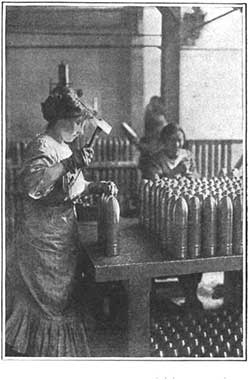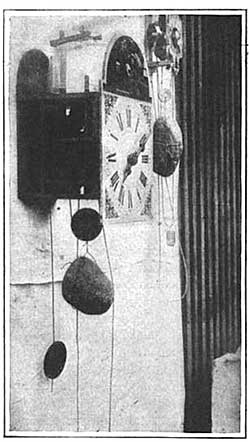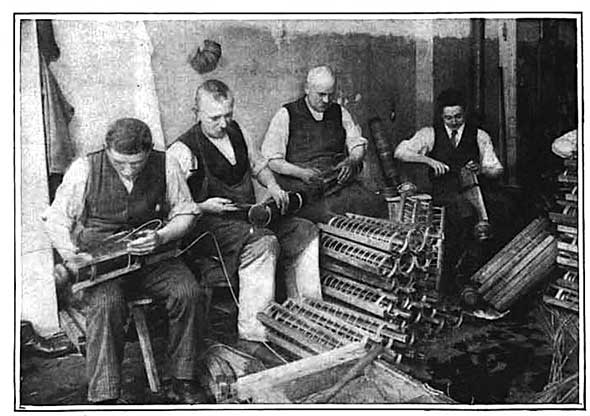This article was published in Scientific American’s former blog network and reflects the views of the author, not necessarily those of Scientific American
The countries that were fighting most desperately in the First World War threw huge chunks of their national economies into the struggle in a search for victory.

We Can Do It: Armaments were increasingly manufactured by women. It is possible (but not certain) this image may be a propaganda photo: it is odd that a worker in a dirty factory job making artillery shells would be so finely dressed.
Image: Scientific American, March 4, 1916
Some statistics (very brief—I promise!). The money value of all the goods and services that a country produces is called the Gross Domestic Product (GDP). Peacetime governments skim off some of the GDP to spend on benefits for its citizens, such as roads, education and defence. As the war continued, though, some governments gobbled up larger shares of the GDP to spend on the war effort.
On supporting science journalism
If you're enjoying this article, consider supporting our award-winning journalism by subscribing. By purchasing a subscription you are helping to ensure the future of impactful stories about the discoveries and ideas shaping our world today.
In 1913, the year before war broke out, the governments of France and Germany spent about 10 percent of their GDP. By 1916 government spending was closer to 50 percent—half the economy—mostly on the war effort.

Scarcity of Metal: This clock in Germany had its copper weight removed and replaced by a rock. The metal, desperately scarce, may have gone into machine-gun cartridges or shell components.
Image: Scientific American, March 4, 1916
These images from Germany and France, published in Scientific American this week 100 years ago, on March 4, 1916, show some of the extreme disruption to the economy (and social order) in these two countries that was caused by the ongoing world war.
(Statistics courtesy of “The Economics of World War I,” edited by Stephen Broadberry and Mark Harrison of the University of Warwick, published by Cambridge University Press, 2009. There are some interesting numbers on British spending from UK Public Spending here. Numbers of French troops mobilized comes from www.151ril.com/content/history)
-
Our full archive of the war, called Scientific American Chronicles: World War I, has many articles from 1914–1918 on the economic aspects and effects of the First World War. It is available for purchase at www.scientificamerican.com/products/world-war-i/

German Home Front: Artillery consumed a vast amount of resources. Here, workers are making wicker cradles for transporting artillery shells from the factory to the front.
Image: Scientific American, March 4, 1916